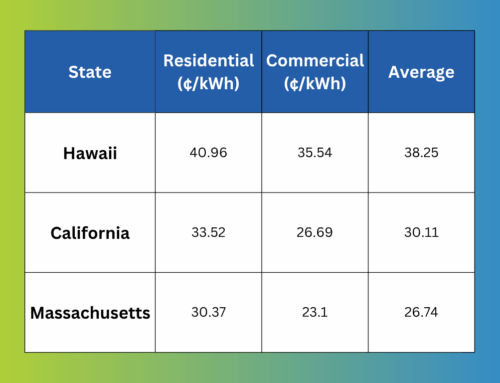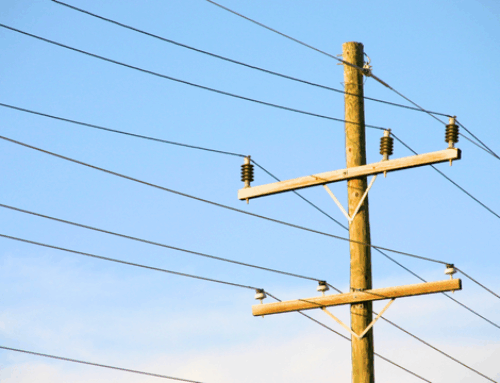While the “One Big Beautiful Bill Act” has eliminated federal solar tax credits, savvy New England homeowners are discovering that solar energy remains a smart investment. In fact, some regions are achieving remarkable adoption rates without relying on federal incentives, pointing to a sustainable future for residential solar in Maine, Massachusetts, and New Hampshire.
The Post-Incentive Solar Reality
The solar industry is experiencing what experts call a “market correction” as federal support winds down. However, this shift is revealing the true economic fundamentals of solar energy – and they’re surprisingly strong in New England.
Learning from Global Success Stories
Australia’s Solar Revolution: Over 40% of homes in some Australian regions have rooftop solar, achieved with minimal government incentives. Average residential solar installation costs dropped to $0.89 per watt – more than $2.00 per watt cheaper than both Canada and the United States. This demonstrates that solar can thrive in mature markets through efficiency and competition.
European Market Maturity: The Netherlands now powers over 30% of households with solar energy, making it the largest source of new energy generation for the country. These markets achieved success through streamlined processes and reduced soft costs.
New England’s Natural Solar Advantages
Premium Electricity Rates Drive Savings
New England consistently ranks among the highest electricity rate regions in the United States, making solar economics particularly attractive:
Massachusetts: Average residential rates of $0.24-0.28 per kWh New Hampshire: Rates averaging $0.22-0.26 per kWh
Maine: Variable rates from $0.18-0.25 per kWh
These high rates mean solar installations pay for themselves faster, even without federal tax credits.
Excellent Solar Resource Potential
Despite common misconceptions about cloudy New England weather, the region offers solid solar irradiance:
- Massachusetts: 4.0-4.5 peak sun hours daily
- New Hampshire: 3.8-4.2 peak sun hours daily
- Maine: 3.5-4.0 peak sun hours daily
This solar resource rivals Germany, which has become a global solar leader despite less favorable conditions.
State and Local Incentives: The New Foundation
Massachusetts: Leading the Way
SMART Program: Massachusetts’ Solar Massachusetts Renewable Target provides long-term pricing certainty through 20-year contracts, offering base compensation rates plus potential adders for:
- Low-income community projects
- Energy storage pairing
- Brownfield development
- Agricultural land preservation
Net Metering: Full retail rate credit for excess production, with annual reconciliation allowing customers to bank credits year-round.
Additional Benefits:
- Property tax exemptions for solar installations
- Sales tax exemptions on solar equipment
- Municipal solar programs with additional rebates
Maine: Community-Focused Approach
Net Energy Billing: Maine’s robust net metering program allows customers to receive full retail rate credits for excess generation.
Community Solar: Maine leads New England in community solar development, allowing renters and homeowners with unsuitable roofs to participate in solar projects.
Pine Tree Power Initiative: Ongoing discussions about utility reform could create additional opportunities for distributed solar adoption.
New Hampshire: Steady Progress
Net Metering: Customers receive full retail rate credit for net excess generation.
Renewable Energy Certificates (RECs): New Hampshire’s Class I REC market provides additional revenue streams for solar installations.
Group Net Metering: Allows multiple customers to share credits from a single solar installation.
The Economic Case: Real Numbers for Real Homes
Typical New England Solar Installation (25 kW System)
System Cost: $22,000 (post federal tax credit elimination) Annual Production: 27,000 kWh Annual Savings: $6,750 (at $0.25/kWh average rate) Simple Payback: 3.3 years 25-Year Savings: $145,000+ (assuming 3% annual rate increases)
Financing Options That Work
Solar Loans: Many lenders offer specialized solar loans with competitive rates:
- 10-20 year terms
- Fixed interest rates 4-8%
- No down payment options
- Payment often lower than current electric bill
Power Purchase Agreements (PPAs): For customers who prefer no upfront costs:
- $0 down installation
- Fixed rate electricity for 20+ years
- Rates typically 10-20% below utility rates
- Professional maintenance included
Solar Leases: Updated lease products remain viable:
- Low or no money down
- Fixed monthly payments
- Maintenance and monitoring included
- Predictable energy costs
Technology Trends Improving Economics
Plummeting Equipment Costs
Module prices have stayed near record lows, around $0.10/Watt direct current, as substantial module overcapacity continues to depress prices. This trend is expected to continue as manufacturing scales globally.
Enhanced Efficiency
Modern solar panels now routinely exceed 22% efficiency, with premium models reaching 24%+. Higher efficiency means:
- More power from less roof space
- Better performance in partial shading
- Improved aesthetics with fewer panels
Battery Storage Integration
Energy storage costs have declined 90% since 2010, making battery backup increasingly affordable:
- Protection during power outages
- Time-of-use rate optimization
- Increased energy independence
- Grid services revenue potential
Reducing Soft Costs: The Path Forward
The Solar Energy Industries Association notes that over 65% of residential solar costs are “soft costs” – everything except equipment. New England can reduce these costs through:
Streamlined Permitting
Leading communities are implementing:
- Online permit applications
- Standardized residential solar permits
- Same-day approvals for standard installations
- Reduced permit fees
Simplified Interconnection
Utilities are improving grid connection processes:
- Faster application processing
- Standardized interconnection agreements
- Reduced technical requirements for small systems
- Digital application submission
Competitive Installer Market
New England’s mature solar market creates healthy competition:
- Multiple qualified installers in every market
- Transparent pricing and performance comparisons
- Customer review platforms driving quality
- Professional training and certification programs
Grid Benefits and Future Value
Resilience and Reliability
New England’s aging grid infrastructure makes distributed solar increasingly valuable:
- Reduced strain on transmission systems
- Local generation during peak demand
- Enhanced grid stability
- Storm recovery benefits
Environmental Leadership
Solar adoption supports New England’s climate leadership:
- Massachusetts: Net zero emissions by 2050
- Maine: 80% renewable electricity by 2030
- New Hampshire: Regional Greenhouse Gas Initiative participation
Future Grid Services
Emerging opportunities for solar homeowners:
- Virtual power plant participation
- Grid balancing services
- Peak demand reduction payments
- Frequency regulation services
Making Solar Work Without Federal Credits
Optimization Strategies
System Sizing: Right-size installations to maximize economic return:
- Analyze 12 months of usage data
- Consider future electric vehicle adoption
- Account for home additions or efficiency improvements
- Balance system cost with available roof space
Technology Selection: Choose components for long-term value:
- Tier 1 modules with strong warranties
- Microinverters for individual panel optimization
- Monitoring systems for performance tracking
- Future-ready electrical infrastructure
Timing Considerations: Market conditions favor careful timing:
- Monitor equipment price trends
- Consider seasonal installation timing
- Evaluate utility rate changes
- Plan around home improvement projects
Working with Quality Installers
Choose installers based on:
- Local experience and reputation
- Customer references and reviews
- Professional certifications and licensing
- Financial stability and warranty backing
- Transparent pricing and performance guarantees
Long-Term Market Outlook
Sustained Growth Expected
Industry analysts project that the global residential solar market will stabilize between 2026 and 2030 at around 35 gigawatt deployments per year, restarting a growth trajectory after the current adjustment period.
Technology Innovation Continues
Ongoing improvements in solar technology:
- Perovskite-silicon tandem cells promising 30%+ efficiency
- Building-integrated photovoltaics (BIPV)
- Advanced energy management systems
- Vehicle-to-home integration capabilities
Market Maturation Benefits
As the solar market matures:
- Installation costs continue declining
- Financing options expand and improve
- Customer education and awareness increase
- Quality standards become more rigorous
Conclusion: Solar’s Sustainable Future in New England
The end of federal tax credits marks not the decline of solar, but its transition to market maturity. New England’s combination of high electricity rates, strong state incentives, excellent solar resources, and environmental commitment creates ideal conditions for continued solar growth.
Homeowners who approach solar with realistic expectations and proper planning will find compelling economics even without federal support. The key is working with experienced professionals who understand local markets, regulations, and opportunities.
The solar industry has weathered previous policy changes and emerged stronger. This transition period will separate serious companies from those dependent solely on incentives, ultimately benefiting consumers through improved service, competitive pricing, and sustainable business practices.
For New England homeowners considering solar, the question isn’t whether solar makes sense – it’s how to optimize your installation for maximum value in the post-incentive era.
Ready to explore how solar can work for your New England home without federal tax credits? Contact qualified local installers to discuss customized solutions that maximize state incentives, utility savings, and long-term value.






